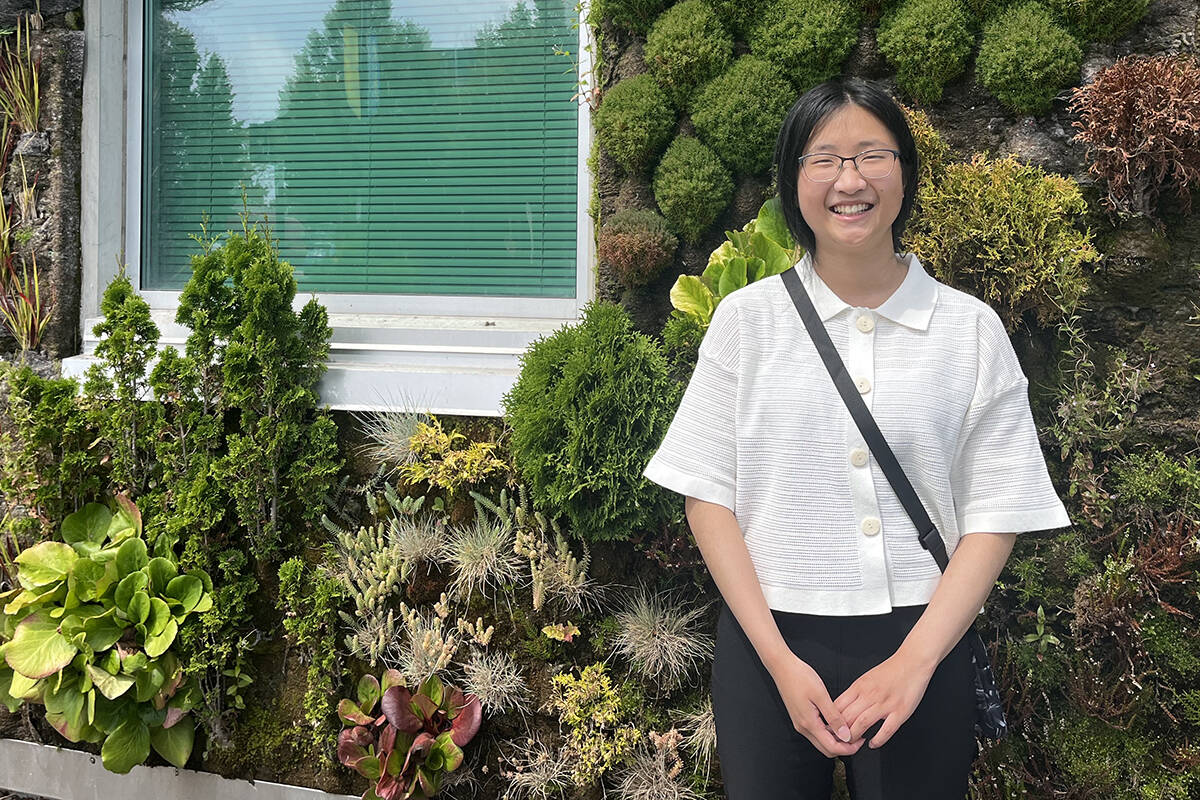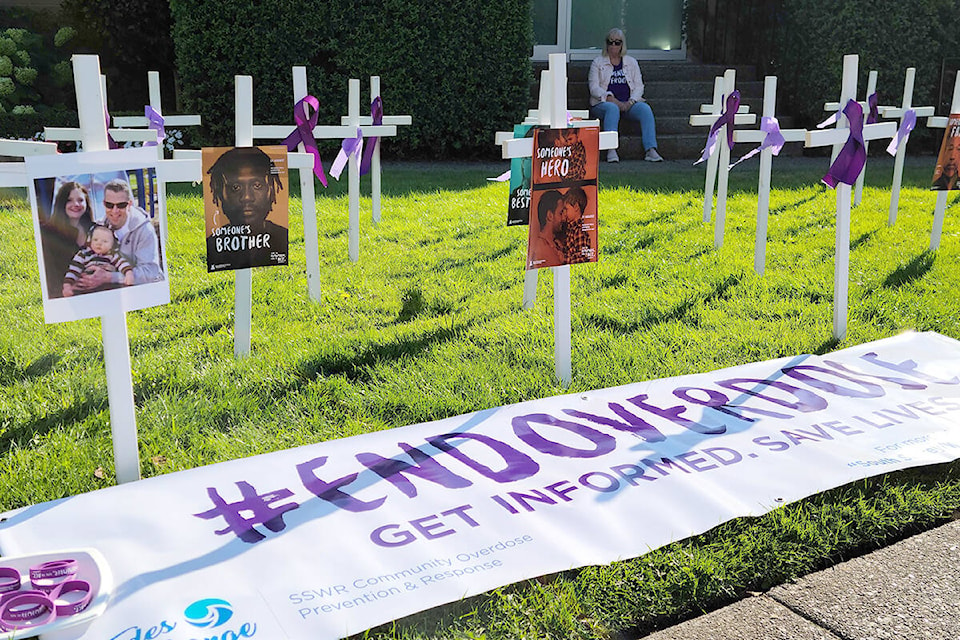Andrew was dealt a heavy burden of grief at a young age.
His father – a kind and caring man with whom he had great conversations – died when Andrew was just 13 years old.
To have one of the people he loved most in the world die – to no longer be able to speak or laugh with him anymore – did not make any sense to the boy.
It was too soon, he said.
The Semiahmoo Peninsula resident, who was diagnosed with depression even before his father’s premature death, said that the medication he’d been taking quit working properly, causing a “never-ending spiral of even worse depression.”
Speaking ahead of International Overdose Awareness Day, Aug. 31, which will be marked with a sombre gathering in White Rock’s Memorial Park, Andrew shared the story of his own battle with addiction.
Experimenting with cannabis with his friend at age 13 was not enough to help him deal with his emotional pain, said Andrew, who asked that his surname to not be used to ensure future employment would not be affected.
By the age of 16, he’d moved on to cocaine.
“Eventually, I went to heroin and that was my main thing that basically solved all my problems for the time being,” he said.
It got bad, Andrew admitted. By 18, his mental health was rapidly declining, he’d become addicted to heroin, had been kicked out of his home a few times and spent a few nights homeless.
“I just didn’t care to be alive. I thought ‘I’m just going to end up committing suicide. This is not worth it.’”
During this time, Andrew also lost his two grandparents – who he’d lived with for a time – within a week of each other.
“It was even more depressing because I had not been around for most of the last year (of their lives) because of addiction. So everything just got worse and worse,” he said.
Seeking recovery treatment was not Andrew’s choice the first time, but he said he knew his family’s efforts to help him came from a place of love, so he went.
The experience, however, did not lead to long-term change.
He did his daily chores and attended the mandatory group therapy for 11 days, until he was moved to a different centre.
After leaving, Andrew began taking suboxone – a combination of buprenorphine and naloxone – which helps to make withdrawal symptoms more tolerable and reduce a person’s dependence on opioids over a longer period of time.
This helped Andrew get off heroin, but only temporarily as he would continue to relapse.
He would tell himself every time that it would be the last, but Andrew knew that was a lie. Soon, though, the deaths of people around him gave him a glimpse at his own possible future.
In 2013, “I woke up to the news that my best friend’s brother Oliver, the guy who got me into all of this stuff, who I was also good friends with, had committed suicide,” recalled the 28-year-old.
During one of Andrew’s relapses, he realized that the heroin he’d taken was much stronger than he was used to and the effect it had on him was not normal.
That is because he was actually taking fentanyl, but didn’t know it.
“I also didn’t know what I was doing,” he admitted.
In 2018, overdosed twice in quick succession.
“That really scared me, I almost lost vision in one eye. It was really disturbing so it scared me for two years.”
Later that year, Andrew lost another friend, this time to an overdose that occurred when the friend – Brody – was using alone.
“That easily could’ve been me,” he realized.
READ ALSO: ‘Those who go unseen’: Overdose Awareness Day to be held in White Rock
Severe knee pain led to a 2020 relapse. Andrew initially took hydromorphone to ease it, but the drug was too expensive so he went back to fentanyl.
Two times Andrew almost lost his life to overdoses that happened while he was using alone. What saved him was the Lifeguard app, which links people who are using to emergency responders in case they overdose.
“I didn’t know what happened, I just woke up to paramedics pumping my chest,” he shared.
Andrew has tried to stop using substances more than 50 times, he estimates.
Now, he is trying again. March was the first full month that he didn’t use. He would not be here, he says, if it weren’t for the medication he takes and his counsellor.
“Years ago I would’ve rather died than stop using,” he recalled.
“I used to leave the door open a crack, like maybe I’ll go back to it but I don’t have that door open anymore.”
’Laughably easy’
Andrew remembers when he was a teenager and how “laughably easy” it was for him to get his hands on any drugs he wanted.
Many parents and educators are struggling to teach kids about substances, notes Emily Jenkins, a professor at the University of British Columbia and researcher in youth mental health and substance use.
“At the local level, a school district level, there is no oversight as to what is going to be offered and so it ends up being very unco-ordinated and ad hoc, with certain schools taking certain approaches and others not adopting any approaches at all,” she said.
One of her goals is to move away from the “resistance approach,” one Jenkins finds is still very common in schools across the province, and the country as a whole. She is currently working on creating resources for teachers to educate youth on substance use.
“We should be approaching this from a harm reduction or harm minimization lens and so, it recognizes that abstinence may not be a realistic goal… if we’re making it a goal for there to be just no substance use, we’re not going to achieve it,” she said.
Offered along with the curriculum would be resources for intervention when needed, she said. The national standards, that Jenkins promises will be “low-barrier and low-cost” are expected to be completed within the next couple of years, she said.

“All of the things I have learned about substance use and the people who use and all the programs in B.C. to help people who are suffering and give them the supports they need, I haven’t seen any of that in education,” said Susie Xu, a recent graduate of Grandview Heights Secondary.
Now, she creates social media posts for the Tides of Change Community Action Team Instagram page to educate others on substance use, including youth. She hopes that schools would implement more education and even have naloxone kits available because although she never used substances and has no desire to, there are people in schools who do.
“It might help someone and that someone might really need it in that time so it’s worth it,” she said.
The International Overdose Awareness Day (IOAD) event in White Rock will begin with a 5 p.m. welcome from members of the Semiahmoo First Nation.
Following the ceremony, which is open to all, will be an opportunity for people to share stories about their own personal experience with substance use. At 6 p.m. there will be a march along the promenade.
@SobiaMoman
sobia.moman@peacearchnews.com
Like us on Facebook and follow us on Twitter.
